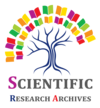Exploring trends, challenges and issues of blood donation in Yaounde-Cameroon
Laboratory of geospatial and health research, Institute for Training and Research in Population Studies (IFORD), University of Yaounde II, Cameroon.
Research Article
International Journal of Biological and Pharmaceutical Sciences Archive, 2022, 04(02), 088-098.
Article DOI: 10.53771/ijbpsa.2022.4.2.0095
Publication history:
Received on 05 October 2022; revised on 15 November 2022; accepted on 17 November 2022
Abstract:
Background: Access to a safe and adequate blood supply has proven to be challenging in sub-Saharan Africa, where systemic deficiencies have greatly been recorded. Blood availability is a public health issue of concern in Sub-Saharan Africa where both the demand and discard rates of blood are high and this includes Cameroon.
Objective: This research study was carried out in order to capture the trends of blood donation, and to address the epidemiological aspects of blood donation in Yaounde.
Study design and methods: The research was quantitative and relied on a cross-sectional study. With record base supplied by the National Blood Transfusion Center, as well as data from a random-sample survey of 300 blood donors at the Yaounde Central Hospitals’ blood bank. Statistical methods were applied to estimate national blood activities from January 2018 to September 2019, and the data subsequently analyzed using the Statistical Package for the Social Sciences (SPSS).
Results: The results revealed a low frequency of blood donation, and portrayed that 81.3% of donors were first time donors. The majority of donors in our study were family/replacement (98.5%) while the minority voluntary (1.6%). More so, among the different aspects studied, five factors were found to be effectively associated to blood donation frequency namely: presence of tattoos/scarifications/piercings, the motivation underlying the blood donation, the blood group, the rhesus group and the occurrence of an accident during previous blood donations.
Conclusion: Results could be useful to provide updates for the government and international organizations’ programs involved in the improvement of blood donor recruitment strategies in Cameroon. The outcome is to permit the elaboration of more effective strategies for recruiting and retaining voluntary regular blood donors and help move away from the use of replacement donors as the main source of blood, hence providing the population with safe blood and consequently reduce mortality rates linked to the availability and quality of blood.
Keywords:
Blood donation; Donors; Epidemiology; Public health; Yaounde-Cameroon
Full text article in PDF:
Copyright information:
Copyright © 2022 Author(s) retain the copyright of this article. This article is published under the terms of the Creative Commons Attribution Liscense 4.0
